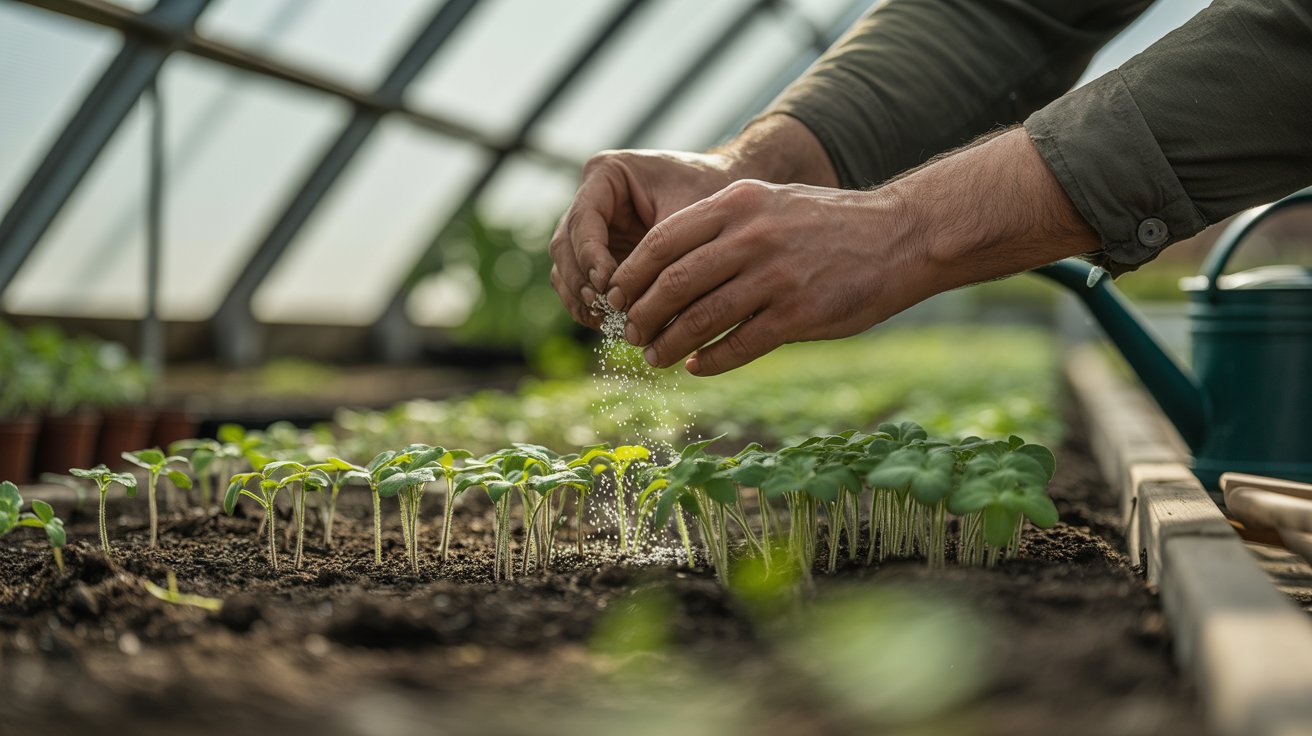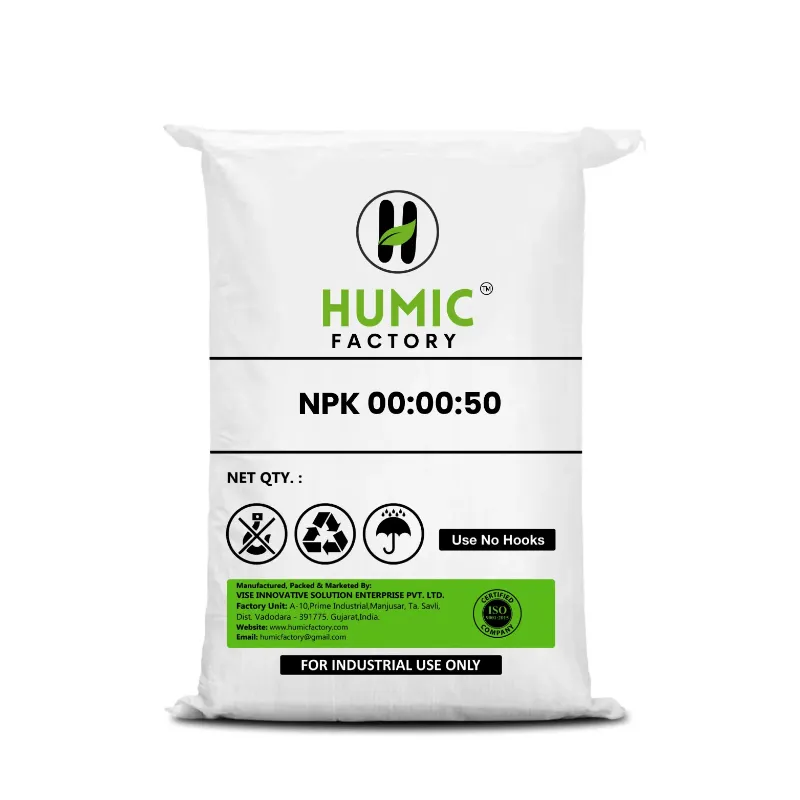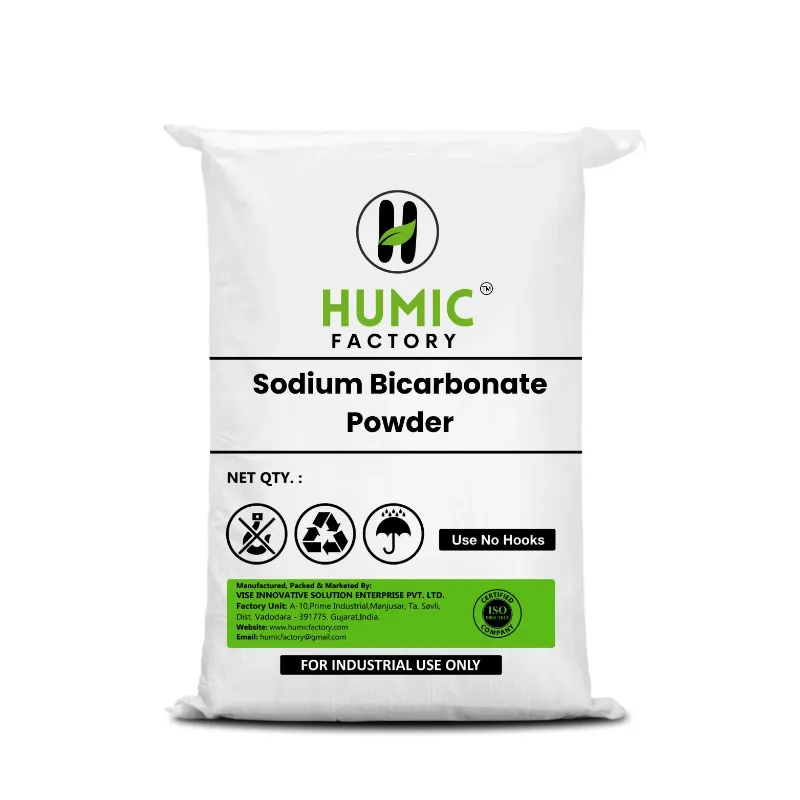Following high carbon organic matter, humic acid is a naturally occurring soil enhancer and has been utilized for numerous decades to revitalize soil vitality and aide in promoting plant growth. Despite being a natural and organic product, humic acid is high in organic carbon and can also improve water retention, enhance nutrient uptake, and improve root health. Humic Acid is unquestionably an integral part of any healthy farming practice.
Humic acid can be routinely applied as a simple practice. You can either foliar spray, soil drench, or mix with compost as an ingredient- all ways in which humic acid mist fit with your farming approach.
How would I apply humic acid? Foliar spray, soil mixing, and irrigation systems can all be ways you apply humic acid. Each way allows you to use humic acid for agriculture or hobby applications whether it's a small garden or a large-scale farm.
Take advantage of these characteristics of humic acid where every drop of humic acid fertilizer improves soil health, agronomic resilience by improving soils from improving soil structure to disrupting soil reliance on chemicals in fertilizer.
Humic acid also spans from getting started & success with humic acid soil application for vegetables or crops, you are already establishing a better soil and yield future.
Understanding Humic Acid: What It Is and Why It Matters
Humic acid is an organic material that is naturally formed when plant and animal materials break down in the soil over a long period of time.
Humic acid is comprised of carbon and minerals that make soil easier to absorb, it causes the soil to retain more water, it feeds microorganisms, and it improves nutrient absorption. For this reason, it is a necessity in both gardening and farming.
What Is Humic Acid and Where Does It Come From?
Humic acid is an organic matter that we find in nature: in peat, compost, and leonardite (a soft coal-like mineral).
Humic acid gives life-sustaining qualities to fertile soils, along with a dark and rich color.
When we extract humic acid and use it as a fertilizer, it becomes an excellent vehicle for restoring soil quality and treatment.
Humic Acid Benefits for Soil Health and Plant Growth
- Improves soil structure and texture
- Aids roots in developing deeper and stronger
- Holds moisture (very useful for dry or sandy soils)
- Increases nutrient availability and absorption
These characteristics have allowed humic acid application to be the assumed method for producing healthier plants and crops.
Importance of Humic Acid for Agriculture Use
Modern farming practices have frequently damaged soil health through years of chemical use. Agricultural soil with humic acid use will aid in reversing that process. Humic acid improves soil fertility and reduces the loss of fertilizer, in addition to enhancing the plant's ability to withstand environmental stresses, while remaining environmentally responsible and safe for long-term use.
Farmers are applying humic acid as a soil application in agriculture applications that include; fields, nurseries, orchards and applications utilizing hydroponics. Whether you are growing vegetables, fruits, pulses or grains, humic acid increases possibilities for more and better harvests, naturally.
Types of Humic Acid Products: Which One Should You Use?
Humic acid is available in several forms each developed to be compatible with differing farming uses and applications.
You will find that selecting the right type of humic acid fertilizer helps the end-user make the most of their soil's capabilities and their crop's performance regardless of whether a home gardener or farmer.
Liquid Humic Acid – Quick Action and Easy Mixing
Liquid humic acid is absorbable quickly, and is suitable for foliar application and drip irrigation systems.
It easily mixes with water and can provide quicker results as needed.
Ideal use for humic acid application on vegetables, flowers and nurseries.
Best suited for farmers who want to achieve quicker plant responses and are applying via systems that allow easier delivery, such as drip irrigation systems.
Granular Humic Acid – Slow Release for Long-Term Benefits
This is a direct injection to the soil, usually with seeds or as a top-dress. It is effective for humic acid soil applications in conventional field crops and orchards. It is a slow release of nutrients to soil health. Best for long-term soil conditioning and dryland farming.
Powdered Humic Acid – Concentrated Form for Versatility
Powdered humic acid is concentrated and the most flexible product. You can include it in compost and fertilizers or dilute it in water.
You can apply it to soil beds, seed treatments, and nursery trays. Best for small-scale growers or individuals looking for custom methods to apply humic acid.
Choosing Between Humic Acid Fertilizer Forms Based on Your Needs
Whether you're focused on humic acid for agriculture use or home gardening, choose the form that fits your method, crop, and scale.
Pro Tip: Start small and observe how your soil and plants respond. Over time, you’ll master how to apply humic acid in a way that works best for your land.
How to Apply Humic Acid: A Step-by-Step Guide
Learning how to properly apply humic acid is vital for achieving the beneficial outcomes that humic acid can provide . When using humic acid for at home gardening or humic acid for agriculture, the method of application can affect results such as soil structure, nutrient absorption , and crop results. From foliar applications to soil incorporation, let's take a look at the most effective methods of applying humic acid fertilizer .
Humic Acid Application Using Liquid Form
Liquid humic acid is one of the best quality ways to apply humic acid, as it is very quick and easy.
How to apply it:
- Mix 2-5 ml liquid humic acid per litre of water (consult product label for specific directions)
- Apply using a foliar sprayer not, drip irrigation, or as a full root drench application .
Benefits:
- Rapid nutrient availability
- Great to use for vegetables, fruit crops, and floriculture.
- A very effective application for small acreage and greenhouse producers .
Tip: Apply early in the morning or late in the afternoon to ensure good absorption of either leaf or roots.
Granular and Powdered Humic Acid Soil Application Techniques
Both granular and powdered humic acid fertilizer are excellent for soil conditioning and long-term enhancement. Granular is applied by broadcasting over the field at 5–10 kg/acre.
- Can be applied in conjunction with base fertilizers or by itself before seeding.
- Powdered humic acid can be compounded with compost or water and applied directly to the seed bed or soil.
- Use 2-3 kg/acre to create a dilution for easy spreading.
Best use: Orchards, open field crop, long duration vegetable crops.
Using these forms of humic acid soil application will gradually improve microbial life and water retention.
Foliar Spray Method – Fast and Effective Absorption
Foliar spraying is one of the quickest ways to apply humic acid and have a positive impact on plant growth.
To apply humic acid with foliar spray:
- Dilute your liquid humic acid 2–3 ml per liter of water.
- Apply evenly to the leaves, coating the tops and undersides.
Why this method works:
- Nutrients are immediately available and absorbed by the leaf of the plant
- Visible results quickly in 3–5 days
- Effective when the plant is experiencing stress during environments such as heat or drought
- Ideal for leafy green crops, flowering plants, and fast-growing cultivars.
Soil Drenching and Direct Incorporation into Fields
This is a method of pouring or injecting a liquid humic acid solution into the root zone.
Steps:
- Mix some liquid humic acid with your irrigation water or apply it directly by hand as close as possible to the root base.
- For drip or flood irrigation you can apply 2-4 litres of the liquid humic acid per acre.
Benefits:
- Deep penetration of humic acid into the soil
- Provides a source of energy for root development and also further stimulates microbial biology
- This technique is great for application on fruit trees, in nurseries and for transplanting crops
This application is ideal for agricultural application for long-term, sustainable and efficient humic acid use.
Mixing Humic Acid with Compost or Fertilizers for Maximum Impact
Humic acid is a natural chelating agent, it also improves the performance of fertilizers and compost.
How:
- Mix liquid or powdered humic acid and compost and apply it in the field.
- You can also mix with NPK or biofertilizers to improve their performance and diminish fertilizer leaching.
Result:
- Increase availability of nutrients in soil
- Refocusing of soil's microbial life / activity
- Decrease in your long-term fertilizer bill
This is a technique commonly used by sustainable and organic farmers.
Each method has its own advantage. Choose your humic acid application based on your crop, soil type, and farming goals.
Timing and Frequency of Humic Acid Application
Knowing how to use humic acid is only one part of the equation; when to use it and how often are just as important. This timing can affect the nutrient absorption capacity of your soil; the strength of your roots, and ultimately, how productive your crops will be.
Best Times to Apply Humic Acid to Soil – Pre-Planting to Post-Harvest
It is all about timing. Here are the best times to utilize humic acid fertilizer:
- Pre-Planting: Seven to ten days before sowing or transplanting is ideal time to apply humic acid as a soil conditioner to build the root zone.
- Early Growth Stage: After germination, or at the vegetative stage, to promote root growth, and nutrient uptake of younger plants.
- Mid-Season: (Flowering or Fruiting) As a foliar spray or soil drench to decrease stress and support the plant's active nutrient reliance.
- Post-Harvest: A humic acid soil conditioning to bring back the microbial numbers and get the soil ready for the next growing cycle.
How Often to Use Humic Acid for Agriculture Use
The frequency is determined by your crop type, soil health, and what type of humic acid fertilizer you are applying:
Liquid Humic Acid:
- Every 15-20 Days when crop is actively growing
- Best for foliar sprays and drip applications
Granular or Powdered Humic acid:
- Once every 30-45 Days or just prior to significant crop development (planting, flowering, fruiting)
- Best if you're applying humic acid over the longer term and you're doing broad-field applications or orchards.
- Make sure you stick to recommended rates and if you increase, don't double or triple the rates!
Seasonal and Crop-Specific Application Tips
- Kharif (Rainy Season Crops): Apply during land preparation with the first application, and then repeat again after 30 days to assist with water-holding capacity in those very rain-soaked soils.
- Rabi (Winter Crops): Apply during land preparation and before sowing and at vegetative development to assist in early root growth and crop establishment in cooler soils.
- Perennials (fruit trees / plantations): Regularly applied in the soil whether through soil application and/or utilizing fertigation systems. Best suited for continual soil health for year-round soil health.
Crops such as vegetables, sugarcane, wheat, and pulses benefit the most from proper and regular use of humic acid for agriculture purposes across their growth development.
Best Practices for Humic Acid Application Based on Soil Type
Know your soil type before you determine how to apply humic acid. Not all soils react the same to application of water, nutrients, organic matter and humic acid. Whatever your soil type, whether sandy, clay or loamy, there are ways to optimize the application of humic acid fertilizer.
Humic Acid Use in Sandy Soils
With sandy soils, they are light soils that drain easily and lack organic matter with difficulty for plants to hold and acquire nutrient.
Humic acid helps by:
- Increasing water holding capacity in loose soil
- Reducing fertilizer and nutrient leaching in the loose soil
- Improving root anchorage and microbial activity
How to apply humic acid:
- Use either granular or powdered humic acid before planting and mid-season
- Add liquid humic acid fertilizer every 2-3 weeks using drip or foliar
- Mix with compost or any biofertilizers for better holding qualities for organic sources
Ideal for: Groundnuts, onions, carrots and light soil crop ty pes
Benefits of Humic Acid in Clay Soils
Clay soils are found to be heavy, compacted and generally poorly aerated. Because of these concerns, root expansion ability and oxygen flow is hindered.
How humic acid helps:
- Separates compacted soil and creates aeration
- Makes heavily textured soils more porous, separating clay clumps and making the soil easier to work
- Increases the movement of nutrients horizontally and vertically within the dense soils
Humic acid tips for applying the product:
- Use irrigation channels to apply a liquid humic acid product to penetrate the dense, compact layers in heavily compacted soils.
- When using unfermented (>30% humic acid) granular humic acid fertilizer, till the granular product into the soil as it should help yield an even distribution of the humic material post application.
- Apply early in the season before planting or seeding, use the pre-plant application period to develop better workable soils and subsequently improved seed growth.
Best application on: rice, sugarcane or any paddy crop growing in alluvial/black soil.
Loamy and Mixed Soil Recommendations
Loamy soil is the perfect growing medium — with organic matter, a good drain and nutrients enough to employ. And even loamy soil will benefit from humic acid in agriculture.
Why use humic acid:
- Sensitivity to microbial balance
- Increased impact of applied fertilizes
- Protection from nutrient depletion from high output farming
Application method:
- Liquid humic acid application by foliar spray at 20-30 day intervals
- Granular or powdered humic acid fertilizer once or twice (i.e. transplanting or flowering stage)
- Can be added to compost or NPK for best use
What is best for: vegetables, pulses, cereals or florals
Adjusting Application by Soil pH and Structure
Humic acid acts over a wide range of pH but works best in a neutral and slightly acidic pH (pH 5.5 - 7.5) range.
Tips:
- In alkaline soils, use acidified liquid humic acid to better amend micronutrient availabiity.
- In acidic soils, use humic acid fertilizer with lime or dolomite, as needed.
- In saline soils, humic acid minimizes the toxicity of salt and improves the resilience of crops growing in those soils.
- Remember to do a simple soil test before you plan your humic acid application methodology.
Common Mistakes to Avoid During Humic Acid Application
Using humic acid to improve soil health and improve crop production can be an important and valuable practice for farmers & growers- but like any agricultural input, it needs to be used properly. It is organic and non-toxic, but it can not be applied incorrectly and expect quality results or utilize the inputs properly, both of which can waste product and could lead to soil imbalance over time.
Overuse and Product Waste in Humic Acid Fertilizer Use
Mistake: "I need to use more for better results."
Truth: Over use of humic acid fertilizer does not mean better results. It simply wastes product and can:
- over saturate the soil needlessly
- create nutrient imbalance
- cause economic loss without yield gain
Humic acid fertilizer should be applied at its recommended rates- a little humic acid goes a long way!
Incorrect Dilution or Dosage Issues
The methods for applying humic acid differ according to the form of product as liquid, powder, or granular. Many farmers misuse humic acid by applying too much or too little.
Liquid Humic Acid:
- Dilute according to label directions—this is typically 2–5 ml per liter of water
- Do not apply undiluted—this can cause root burn or leaf burn.
Granular/Powdered Humic Acid:
- 5-10 kg per acre is the standard for a humic acid soil application.
- Uneven spreading and availability create uneven reality which can waste product.
Weigh accurately, apply evenly.
Skipping Soil Tests Before Application
One big mistake with humic acid for agriculture is applying it. The mistake is applying it blindly, without knowing the status of the soil.
Without testing:
- Knowing how much organic matter is in the soil, whether the pH is in the optimal range, and nutrient status is unknown
- You risk applying too little or too much based on a guess
Instead:
- Do a soil test every season
- Understand the soil's needs, and adjust the humic acid application according, to actual needs of the soil
Precision = better ROI and healthier soil.
Compatibility Problems with Fertilizers or Pesticides
In general, humic acid is safe with other inputs, but it may not mix with everything.
Issues can happen when:
- Mixed with very acidic and alkaline fertilizers
- Combined with some chemical pesticides or micronutrients
Recommended Practice:
- Conduct a jar test before mixing products
- Apply the products separately if you are unsure - especially when using new combinations
- By doing so you will ensure your humic acid fertilizer is working to its fullest potential while maximizing the benefits of other products.
Humic acid can help significantly improve soil health, water retention, and nutrient use efficiency; however, to reach its full potential you must apply it correctly, apply it at the right time and apply it in the right combinations.
Tips to Maximize the Effectiveness of Humic Acid
Humic acid can help significantly improve soil health, water retention, and nutrient use efficiency; however, to reach its full potential you must apply it correctly, apply it at the right time and apply it in the right combinations.
Combine Humic Acid Fertilizer with Organic Nutrients
How it works:
Humic acids bond with the nutrients in the soil and therefore are more available to the roots of plants. So, when applied with:
- Organic compost
- Biofertilizers
- Natural manures
This will create a nutrient-rich ecosystem that will be productive over the longer haul.For the best results, apply powdered or liquid humic acid fertilizer as an integral part of the organic nutrient plan.
Apply Early for Root Development and Stress Resistance
The early growth stage is critical. Applying humic acid during seedling or transplanting stages:
- Stimulates strong root development
- Improves early nutrient absorption
- Increases drought and transplant shock resistance
How to apply humic acid early:
- Use 2–4 ml of liquid humic acid per liter of water for foliar spray or soil drenching
- Mix granular humic acid into the topsoil during bed preparation
Start early to set the foundation for the entire crop cycle.
Track Results and Adjust as Needed
Common mistake: Applying the same quantity of humic acid fertilizer for every crop and every field.
Best practice:
- Observe root development, leaf color, and yield response
- Adjust the dosage or method based on your crop’s response
- Conduct follow-up soil tests if needed
This helps make your humic acid application precise and cost-effective.
Use Alongside Microbial Products to Enrich Soil
Humic acid acts as a microbial stimulant, feeding the good bacteria and fungi in your soil.
When used with:
- Azotobacter
- Trichoderma
- Phosphate-solubilizing bacteria
it boosts microbial activity, improves nutrient cycling, and enhances soil resilience.
Use both together for humic acid soil application in crops that demand high soil activity (like sugarcane, pulses, and vegetables).
FAQs
Q1. What is the best way to apply humic acid in the garden?
The best way to apply humic acid in a garden is by using liquid humic acid as a foliar spray or soil drench. It absorbs quickly and supports faster nutrient uptake. You can also try humic acid soil application by mixing granular or powdered forms into your garden beds.
Q2. Can I mix humic acid with other fertilizers or pesticides?
Yes, you can! Humic acid fertilizer is compatible with most organic and chemical fertilizers. However, always perform a jar test before mixing with pesticides to avoid unwanted chemical reactions. Combining humic acid application with NPK can even improve fertilizer efficiency.
Q3. How often should humic acid be applied?
For most crops, humic acid can be applied every 15–30 days during active growth. If you're using liquid humic acid, you can apply it more frequently in smaller doses. Granular humic acid fertilizer is best applied once per crop stage.
Q4. When is the best time to apply humic acid?
The best time for humic acid application is early in the growing season—during seedling or transplant stages. It can also be applied before planting as part of soil preparation and during mid-season for stress recovery. Pre-planting and flowering stages are ideal for humic acid for agriculture use.
Q5. Is liquid humic acid better than granular or powdered?
It depends on your needs. Liquid humic acid offers faster results and is ideal for foliar spraying or fertigation. Granular and powdered forms provide long-term benefits through humic acid soil application. All are effective; the best choice depends on your crop, soil, and system.
Conclusion: Transform Your Soil Health by Mastering How to Apply Humic Acid
Using humic acid isn’t just another farm task — it’s a smart step toward long-term soil improvement and crop success. Whether you're growing vegetables in your backyard or managing large-scale farms, learning how to apply humic acid correctly can change the way your soil behaves and your plants grow.
A Simple Practice for Long-Term Soil and Plant Success
From improving root health to boosting microbial life, humic acid application builds a healthier soil ecosystem. It enhances fertilizer performance, protects against environmental stress, and gradually regenerates soil that may have been damaged by over-farming.
And the best part? It’s natural, safe, and sustainable.
Healthier Roots, Higher Yields, and Better Soil Quality
When you use humic acid fertilizer:
- Roots grow deeper and absorb more
- Soil holds more water and nutrients
- Plants become more resilient to stress
These small changes lead to bigger harvests, improved quality, and better profits over time—making humic acid for agriculture use a no-brainer for every forward-thinking farmer.
Begin Your Journey with Humic Acid Application Today
Whether you start with liquid spray, soil drenching, or granular broadcast, there’s no wrong way—just a right time to begin.
Choose the right product
Follow proper timing and dosage
Monitor results and grow with confidence
Let every application of humic acid soil application bring you closer to richer soil and stronger harvests.






